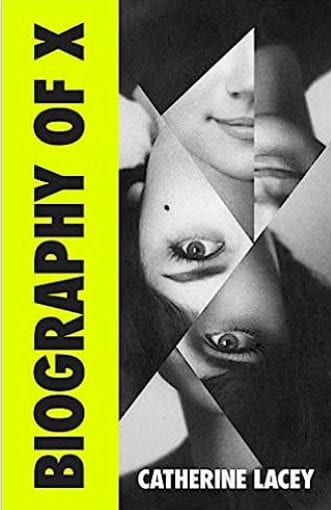Well, what do you call a book that is part biography, part explanation about how you research a biography, all fiction, part psychological thriller with an alternative American history complete with photographs and momentos of X? You call it Biography of X with the book exploring grief and art as reported by Catherine Lucca, the fictional author of the biography and the wife of X. This is truly a genre-shifting book that is quite unlike anything else I have read.
When X dies, Theodore Smith writes a biography of her, something she would have hated, and in it are many factual errors according to CM Lucca.
People, it seems, are too complicated to sit still inside a narrative, but that hasn’t stopped anyone from trying, desparately trying, to compact a life onto pages.
p33
This hack of a biography infuriates her so much that she sets off to investigate certain questions herself, which were never answered during their relationship such as where she was born, it’s lucky that she had been a journalist. What she discovers is an ‘art monster’ who chooses art over everything with her multiple personalities supporting her to do this and to manipulate people.
A single name failed to contain her.
p40
What is clever about the book is that as you explore X and her relationships, you are also introduced to an alternative history of America, like a film running behind the story, which must have drawn upon Korea, Germany and Eastern Europe. In the 1940s America was a fractured country. There was the North, liberal with gay marriage and equality for men and women, the south with a theocracy, a far-right Christian sector and the West which was ‘out there’. Eventually, the North invaded the South and forced a union but groups from the south were not happy about this and become terrorists.
Time and again, Lucca uncovers elements and events in her wife’s life that she knew nothing about except that everyone is drawn to her like a moth although frustratingly why is never explored in any detail. She has been married three times, not twice like Lucca believed, she disappears for stretches of time and Lucca is not allowed to ask why or where she has been. Stories of violence rear their head forcing Lucca to remember times in her relationship when a knife or gun were involved. The final piece of art work, discovered 8 years after X’s death is brutal. And yet, Lucca talks to X every day throughout the most mundane of activities and is haunted by her.
Dead for all these years and I’ve never been without her, not for a moment, not for even one moment, and no matter how much I want to be through with this life, no matter how much I want her memory gone, gone completely, she will not leave me. Alone all these years, and yet I want nothing more than to be even more alone.
p364
Quite depressing, really.
X is quite a name to choose, remember the ‘artist formally known as Prince’ – just to be different and noticed. It stands for a kiss, X marks the spot for treasure, the mark a teacher makes when you get something wrong, it can mean multiply, a variable and can stand for Christ as in Xmas. It is a totally appropriate name for someone who has multiple personas and is too slippery to get hold of and who escaped a shut down, theocratic society.
It is a feminist tract – at times subtle and others more obvious.
Young men who might have otherwise pursued careers as painters and sculptors were pushed toward arts administration, and if they still wanted to work with their hands, then working as an assistant to a female artist was understood to be the most logical option. The belief that the feminine perspective was the only necessary perspective was becoming commonplace at the time: male artists pursued careers with the burden of explaining or accounting for the global history of male violence and destruction: that is – men could only make work about men. Few took on the task, and those who did were often ridiculed.
p271
I was also taken by the phrase ‘rape by deception’ as one woman who had an affair with X described what they had. Because X was a fake or deception herself, she wasn’t having sex with a ‘real’ person and therefore it was rape. It reminded me of the undercover Police who had affairs, marriages and children with women whilst in role. The women who this applies to have been greatly traumatised and it is snippets like this that I think really show that a woman can be an ‘art monster’ as much as a man.
At the end of the blurb on the front cover of the book it says the book ‘pulses with suspense and intellect’. There is most definitely suspense and intellect but if this is pulsing, the person would be dead. It is a very one-paced novel and I was bored halfway through. Yup, more stories about how awful X was, how secretive and manipulative, how people held onto her as their own and revelled in her wife not knowing. I forced myself not to jump through the final third and just read the ending. It’s paradoxical that a book can be so interesting in structure but so boring in parts. It could have been much shorter and we still would have reached the same conclusion.
I think this is a real marmite of a book – you’ll either love or hate it. That might make it good for a book club discussion but I bet more than half of your group wouldn’t finish reading it.
